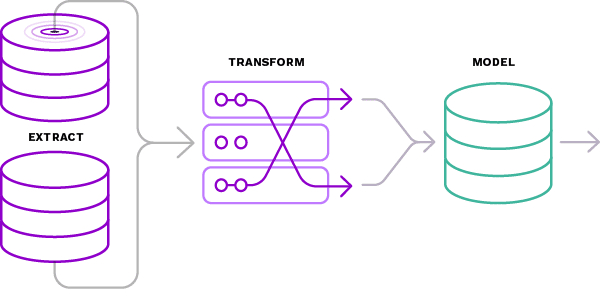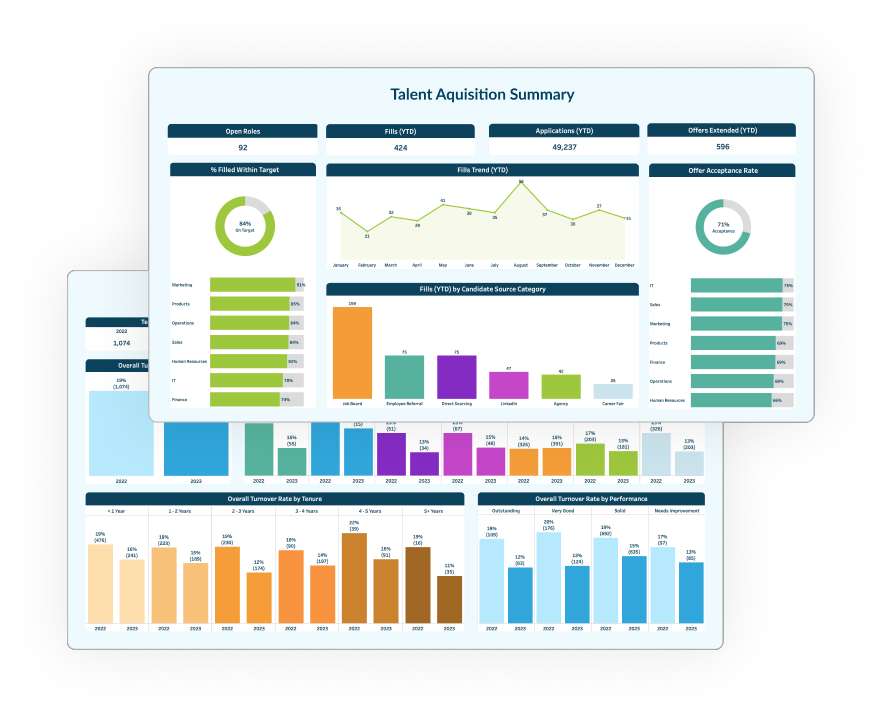Unlocking HR potential: People analytics that drive ROI
Enter the world of people analytics solutions and HR analytics software, complete with robust dashboards that draw your attention to what really matters. People analytics can be the spark that illuminates untapped opportunities in your workforce. Imagine no more guesswork about why turnover is high in one department or whether your talent acquisition processes are consistently bringing in the best hires. That is the promise of strategic HR analytics done right. Let us explore the concept of ROI-driven HR analytics and why it is critical for mid-market businesses seeking to transform their human resource strategy.
First, let us clear the air about the term ROI-driven. Many leaders associate return on investment with big spreadsheets or complicated finance models that feel like they require a math PhD to interpret. But ROI in HR is simpler than that, thanks to modern workforce analytics platforms and HR analytics dashboards. ROI-driven HR analytics is about tying your people-related data to quantifiable business outcomes. Perhaps that means tracking how a new employee development program affects productivity, or measuring the reduction in turnover after implementing a flexible work policy. It all boils down to connecting what you spend on human resources to actual impact on performance, engagement, and ultimately, revenue.
The good news is that achieving meaningful results does not have to be overly complex. Yes, the spreadsheets you live with can be tedious, but the main culprit is usually a lack of system integration or inconsistent data entry. HR teams often rely on multiple solutions like applicant tracking systems (ATS), HRIS tools, and performance management software, with little to no alignment between them. Trying to manually reconcile all that data on a monthly basis is like herding cats while juggling flaming torches. Not exactly the best way to gain trust in your numbers. That is why many HR leaders are turning to people analytics solutions designed to integrate data from various sources into one cohesive platform.






With a unified view of your workforce, you can set up talent acquisition analytics to see where your best candidates come from and how quickly they pass through each recruitment stage. You can gather deeper insights into employee turnover by examining demographic data, performance trends, and engagement levels side by side. You can even use people analytics dashboards to measure how a recent compensation adjustment might have affected workforce stability. For HR teams that want to prove their strategic value, these insights can be a game changer.
One might ask, is people analytics only for large enterprises with huge budgets? Absolutely not. Mid-sized companies, like those with 500 to 10K employees, stand to benefit significantly, since they can finally gain clarity on workforce patterns without hiring an army of data scientists. Many of these organizations are in high-growth industries, where real-time workforce insights can help shape future strategy. For instance, if your analytics dashboard reveals a spike in turnover among engineers with three to five years of experience, you can address that specific cohort with targeted retention programs or skill development initiatives before it becomes a full-blown retention crisis. That is real ROI: taking data-driven steps to retain valuable employees.
Another compelling ROI factor is improving talent acquisition processes. Rather than just pulling a single, generalized number for cost-per-hire, truly strategic talent acquisition analytics will reveal which recruiting channels yield the best long-term hires, which departments experience the slowest recruiting cycles, and how candidate engagement changes throughout the interview process. Instead of playing a long, confusing game of “Where did I post that job last time?” you will have precise metrics for each platform or channel. That level of detail not only shortens your time-to-fill but also saves big bucks in recruiting expenses. Fewer days spent waiting for a new hire to come on board means higher productivity and a faster route to innovation.

But what about the dreaded spreadsheet labyrinth? That is where PeopleInsight and similar HR analytics software platforms can make a remarkable difference. These solutions aggregate data and deliver crisp HR analytics dashboards, freeing up your HR staff to focus on strategic work. Rather than burning hours in Excel, they will have time to design proactive interventions that can drive higher engagement or close skill gaps. You might say that advanced people analytics solutions are the secret weapon that HR teams have been dreaming about. The extra time you gain could be put toward designing better onboarding processes or planning succession strategies for critical leadership roles.
Luckily, businesses that invest the time and energy to incorporate these insights into their strategic HR approach usually see a positive shift. Suddenly, HR has the data to back up its initiatives, and leadership takes notice. This tangible evidence of success helps HR teams secure more resources, leading to better outcomes across the board. Whether it is lowering turnover, boosting employee satisfaction, or enhancing diversity and inclusion efforts, each success contributes to the growing ROI that justifies the analytics investment.
Ultimately, the key to ROI-driven HR analytics is not fancy charts or cramming as much data as possible on a reporting slide. It is about connecting the dots between employee data and measurable business impact. By implementing software that consolidates your data into accessible insights, HR leaders can transition from reactive to proactive planning. No more last-minute scrambles or guesswork. Instead, you will have a clear, data-backed vision of how to optimize workforce strategies for the greatest return. That vision can help you reduce turnover, improve quality of hire, and position HR as a strategic partner at the executive table.
If you have been slogging through spreadsheets and suspect there is a better way forward, consider taking a closer look at solutions like PeopleInsight. You might be pleasantly surprised by how quickly you can turn human capital data into actionable intelligence that drives real ROI. Ready to explore what People Analytics can do for your organization? Schedule a free strategy session at this link.
You have everything to gain by transforming HR analytics from a tedious chore to a strategic advantage. Embrace it, and watch your organization’s human resource strategy evolve for the better. The spreadsheet days of ambiguous data could soon be a distant memory, replaced by targeted insights that make a tangible difference in performance, culture, and ultimately your bottom line.